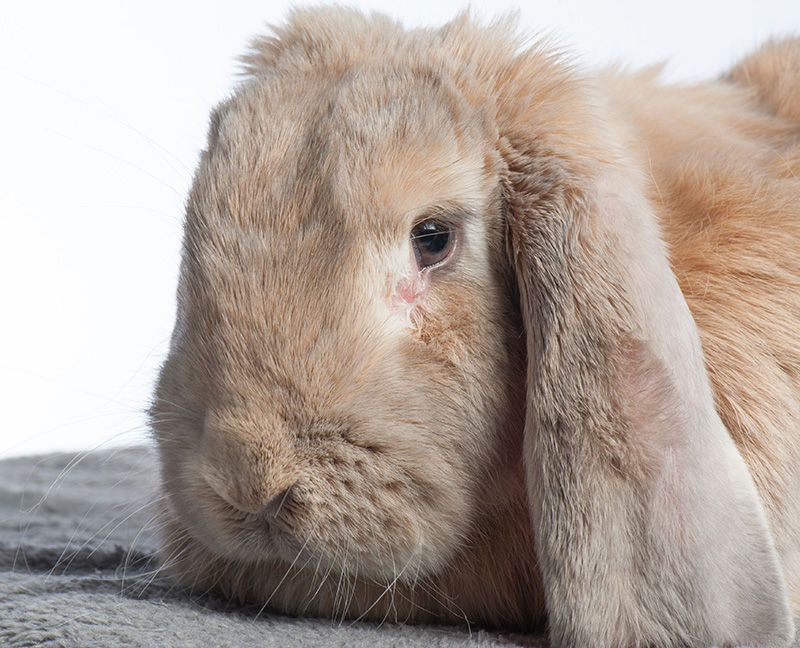
Do lop-eared rabbits have more dental and aural disease than erect-eared rabbits?
Analysis of data describing rabbits under UK primary veterinary care using VetCompass records.

Challenge
Initial evidence has shown that rabbits with artificially selected extreme morphological traits of lop ears and brachycephaly experience reduced welfare through a higher prevalence of painful ear and teeth problems, a cause for concern as lops and dwarves are the most popular pet rabbit breeds in the UK. This study aims to determine the prevalence of these diseases in UK pet rabbits using VetCompass data that represents approximately 30% of UK practices. From this, the major risk factors for the development of the conditions will be established, focussing on breed and the associated ear and skull conformations in dwarves and lops, and the welfare implications assessed.
Solution
If the hypothesis that lop-eared rabbits have more dental and aural diseases than their erect-eared conspecifics is true, then dissemination of these findings will increase awareness in the public, veterinary professionals, rabbit breeders, and show judges. We aim to encourage the public to care less about the looks of their pet, and more about the animal itself and any suffering it experiences when choosing what type of rabbit to own. The study results will be used to encourage the breeding of healthier animals by, for example, reducing their scores in shows if they are affected and only displaying healthier conformations in the press and media.
Impact
This research will allow for better education and awareness of conformation related welfare issues in rabbits. A raised awareness in the public will aid in making informed decisions when selecting and caring for rabbits of differing conformations. It will also help owners to recognise signs of illness in affected animals, and seek veterinary care more quickly and frequently. Veterinary professionals with a raised awareness of the conditions and affected breeds will optimise the care given to rabbits as they have an improved ability to recognise these conditions linked to conformation. They will be important in facilitating knowledge transfer to owners and encouraging preventative measures through correct nutrition or regular ear cleaning. Additionally, breeders and show judges with a raised awareness will help to improve breeding practices. Most importantly, the rabbits themselves will benefit from improved welfare resulting in reduced pain, improved eating and grooming, reduced deafness, and reduced frequency of stressful veterinary visits for anxiety-inducing treatment. In the long-term, it is hoped this study will result in a decreased demand for rabbits with extreme conformations to be bred so there are fewer animals suffering with painful and debilitating conditions.
Partners
Funding by Universities Federation for Animal Welfare (UFAW)
